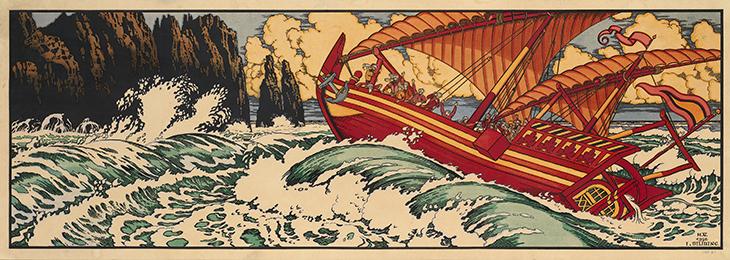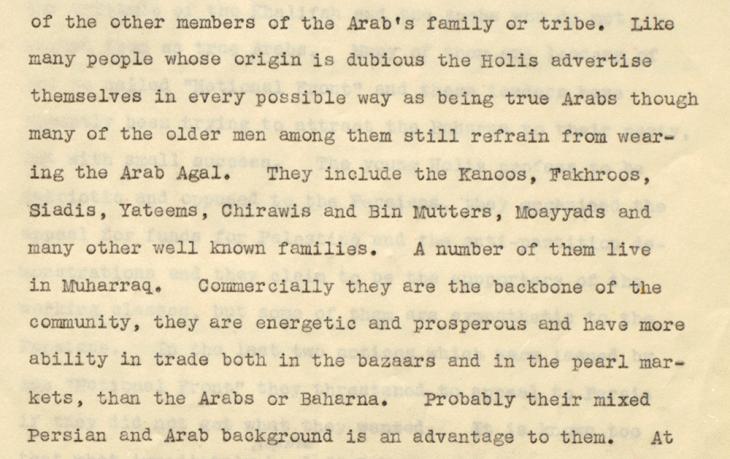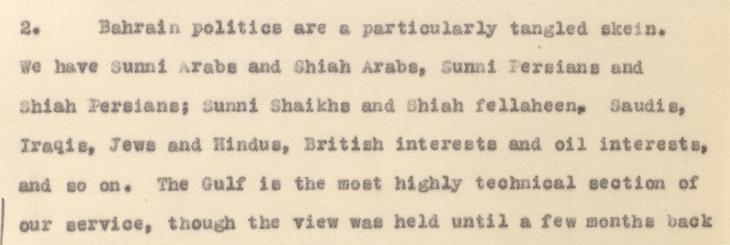Overview
The Arabic verbal root ‘hawwala’ is used to express a variety of verbs related to movement, change, transformation, or conversion. In this case, the term refers to a particular group of people, sometimes deemed the ‘wandering Arabs’ of the Gulf. Not to be confused with nomadic Bedouin, the Hawala Group of people who migrated from the Arab shores of the Gulf to the Persian side over the course of the seventeenth and eighteenth centuries, many of whom have since returned to the Arabian Peninsula. migrated from the Arab shores of the Gulf to the Persian side over the course of the seventeenth and eighteenth centuries, and many have since returned to the Arabian Peninsula. Gradually, they came to be known as the Hawala Group of people who migrated from the Arab shores of the Gulf to the Persian side over the course of the seventeenth and eighteenth centuries, many of whom have since returned to the Arabian Peninsula. , or literally, the ‘transformed’ – due to these movements from, and back to Arabia.
More idiomatically the term Hawala Group of people who migrated from the Arab shores of the Gulf to the Persian side over the course of the seventeenth and eighteenth centuries, many of whom have since returned to the Arabian Peninsula. conjures up a history of movement and intermarriage between the Arabic and Persian-speaking communities of the Gulf, exemplified in a particular group of people. By the early twentieth century, when British cartographers and ethnologists (such as John Gordon Lorimer, author of the Gazetteer of the Persian Gulf The historical term used to describe the body of water between the Arabian Peninsula and Iran. , Oman, and Central Arabia) began mapping the Gulf, they considered the Hawala Group of people who migrated from the Arab shores of the Gulf to the Persian side over the course of the seventeenth and eighteenth centuries, many of whom have since returned to the Arabian Peninsula. to be an ethnic group of their own, not because of anything particular about them, but precisely because they found it difficult to distinguish them as being either particularly Arab or Persian. The etymology of the term is itself a reflection of the process of migration from and return to Arabia: derived from the Arabic root for change or transformation, hawwala, the term is nonetheless pronounced as hawala Group of people who migrated from the Arab shores of the Gulf to the Persian side over the course of the seventeenth and eighteenth centuries, many of whom have since returned to the Arabian Peninsula. , possibly due to the Persian adaptation of the Arabic original. Perhaps unsurprisingly, those who identify as Hawala Group of people who migrated from the Arab shores of the Gulf to the Persian side over the course of the seventeenth and eighteenth centuries, many of whom have since returned to the Arabian Peninsula. of the Arab Gulf are concentrated in the cities with the longest histories of trade and migration with the opposite Persian shores.

Difficulties in Translation
Translating the term, however, posed unforeseen challenges: was this a Persian term that referred to a Persian population, an originally Arabic word corrupted by Persian pronunciation, or should it be translated as referring to a hybrid group of Persianised Arabs? To colonial administrators, the community’s ‘dual’ heritage complicated their attempts at singling out their political or national allegiances, even when there was rarely ever such duplicity on the part of the Hawala Group of people who migrated from the Arab shores of the Gulf to the Persian side over the course of the seventeenth and eighteenth centuries, many of whom have since returned to the Arabian Peninsula. themselves, who have always declared their distinctive (if often questioned) Arab credentials. The difficulties encountered in translating the term demonstrate how the term Hawala Group of people who migrated from the Arab shores of the Gulf to the Persian side over the course of the seventeenth and eighteenth centuries, many of whom have since returned to the Arabian Peninsula. confused colonial officials trying to make sense of (and police) the hybridity of the populations they governed, especially in times of conflict. This was because the ‘tribal’, religious, or ethnic identity of local communities was often considered solid grounds on which to speculate about their relative loyalty to local rulers, or obedience to British colonial officials themselves.
Hybridity and Loyalties
One example of this kind of problem solving occurred when British officials began speculating about the respective loyalty of various communities to the ruler of Bahrain in light of increasingly aggressive Persian claims to the island. In 1949, Charles Belgrave, the British Advisor to the Government of Bahrain wrote: ‘Like many people whose origin is dubious the Holis Group of people who migrated from the Arab shores of the Gulf to the Persian side over the course of the seventeenth and eighteenth centuries, many of whom have since returned to the Arabian Peninsula. advertise themselves in every possible way as being true Arabs. Probably their mixed Persian and Arab backgrounds is an advantage to them’. He goes on to describe them as ‘not liked’ and ‘keenly political’, precisely because their loyalties were ‘divided’, although his knowledge of Hawala Group of people who migrated from the Arab shores of the Gulf to the Persian side over the course of the seventeenth and eighteenth centuries, many of whom have since returned to the Arabian Peninsula. families appears to have been limited to hearsay.

Such hybridity frustrated British attempts at predicting political outcomes. Charles Geoffrey Prior, Political Resident A senior ranking political representative (equivalent to a Consul General) from the diplomatic corps of the Government of India or one of its subordinate provincial governments, in charge of a Political Residency. in the Persian Gulf The historical term used to describe the body of water between the Arabian Peninsula and Iran. , displayed such frustration when he wrote: ‘Bahrain Politics are a particularly tangled skein. We have Sunni Arabs, Shiah Arabs, Sunni Persians and Shiah Persians, Sunni Shaikhs and Shiah fellaheen Arabic for ‘peasant’. It was used by British officials to refer to agricultural workers or to members of a social class employed primarily in agricultural labour. , Saudis, Iraqis, Jews and Hindus, British interests and oil interests, and so on. The Gulf is the most highly technical section of our service’. Presumably, ‘highly technical’ was a reference to the technical knowledge required of local cultural diversity. To British officials such cultural diversity translated into political difficulty, particularly if the idea was to somehow square people’s identity with their politics. This meant that the more diversity existed in any given place, the more detailed a list of religious and ethnic groups was required, especially on employment rosters, state payrolls, or police forces.

Yet ethnic origin or religious affiliation were never good measures of political allegiance. This became evident as the Arab states of the Gulf became independent nation-states, and began promoting specifically Arab, rather than cosmopolitan, ideas of nationalism. As a result, from the mid-twentieth century onwards many Persian-speakers on the Arab side of the Gulf began to identify as Hawala Group of people who migrated from the Arab shores of the Gulf to the Persian side over the course of the seventeenth and eighteenth centuries, many of whom have since returned to the Arabian Peninsula. to integrate into Arab host societies, thus obscuring any remaining distinction as to who was originally designated by the term Hawala Group of people who migrated from the Arab shores of the Gulf to the Persian side over the course of the seventeenth and eighteenth centuries, many of whom have since returned to the Arabian Peninsula. (returned Arabs). Such a practice of re-identification allowed them both to account for one’s Persian background, and simultaneously claim to be Arab. As a result, there are no longer any compelling reasons to consider the Hawala Group of people who migrated from the Arab shores of the Gulf to the Persian side over the course of the seventeenth and eighteenth centuries, many of whom have since returned to the Arabian Peninsula. as a culturally, economically, or politically distinct entity today, even though they continue to represent an important historical Arab community.
Shifting meanings
Remarkably, the identification of Hawala Group of people who migrated from the Arab shores of the Gulf to the Persian side over the course of the seventeenth and eighteenth centuries, many of whom have since returned to the Arabian Peninsula. has thus evolved to coalesce around a claim of return and by extension, some form of social ‘restoration’; an ‘ethnicity’ based on claims of migration and return rather than blood or soil. The term itself speaks to the cultural diversity of the Gulf, but also to the fraught contemporary relations between the Arab world and Iran, as opposed to a history of ordinary migration and intermarriage. And while translating the term literally and defining its etymology might be simple enough, politics and history render its actual meaning much more difficult to address.
FURTHER READING
Ahmed al-Dailami, ‘”Purity and Confusion”: The Hawala Group of people who migrated from the Arab shores of the Gulf to the Persian side over the course of the seventeenth and eighteenth centuries, many of whom have since returned to the Arabian Peninsula. between Persians and Arabs in the Contemporary Gulf’ in Lawrence G. Potter (ed.) The Persian Gulf The historical term used to describe the body of water between the Arabian Peninsula and Iran. in Modern Times: People, Ports, and History, Palgrave Macmillan, New York, 2014, pp. 299-326
Madawi Al-Rasheed (ed.) Transnational Connections and the Arab Gulf, Routledge Taylor & Francis Group, London and New York, 2005
Willem M. Floor, The Persian Gulf The historical term used to describe the body of water between the Arabian Peninsula and Iran. : The Hula Arabs of the Shibkuh Coast of Iran, Mage Publishers, Washington, D.C., 2014

